DiTiC is the smart, minimalist tile placement game that everyone needs
In the current board game market, it’s tough to be either original or minimalist, since the penchant of the moment seems to be multi-million dollar Kickstarter games crammed with detailed, unnecessary miniatures and basic combat systems. DiTiC sticks its middle finger firmly in the air at such ideas, and it’s all the better for it.
Dan Browning is the one-man-band behind DiTiC, having designed the game, created the artwork and published it under his own brand — Dan Browning Games. The self-published nature of DiTiC may show in its relatively low key appearance, but that doesn’t mean that it’s not a quality product.
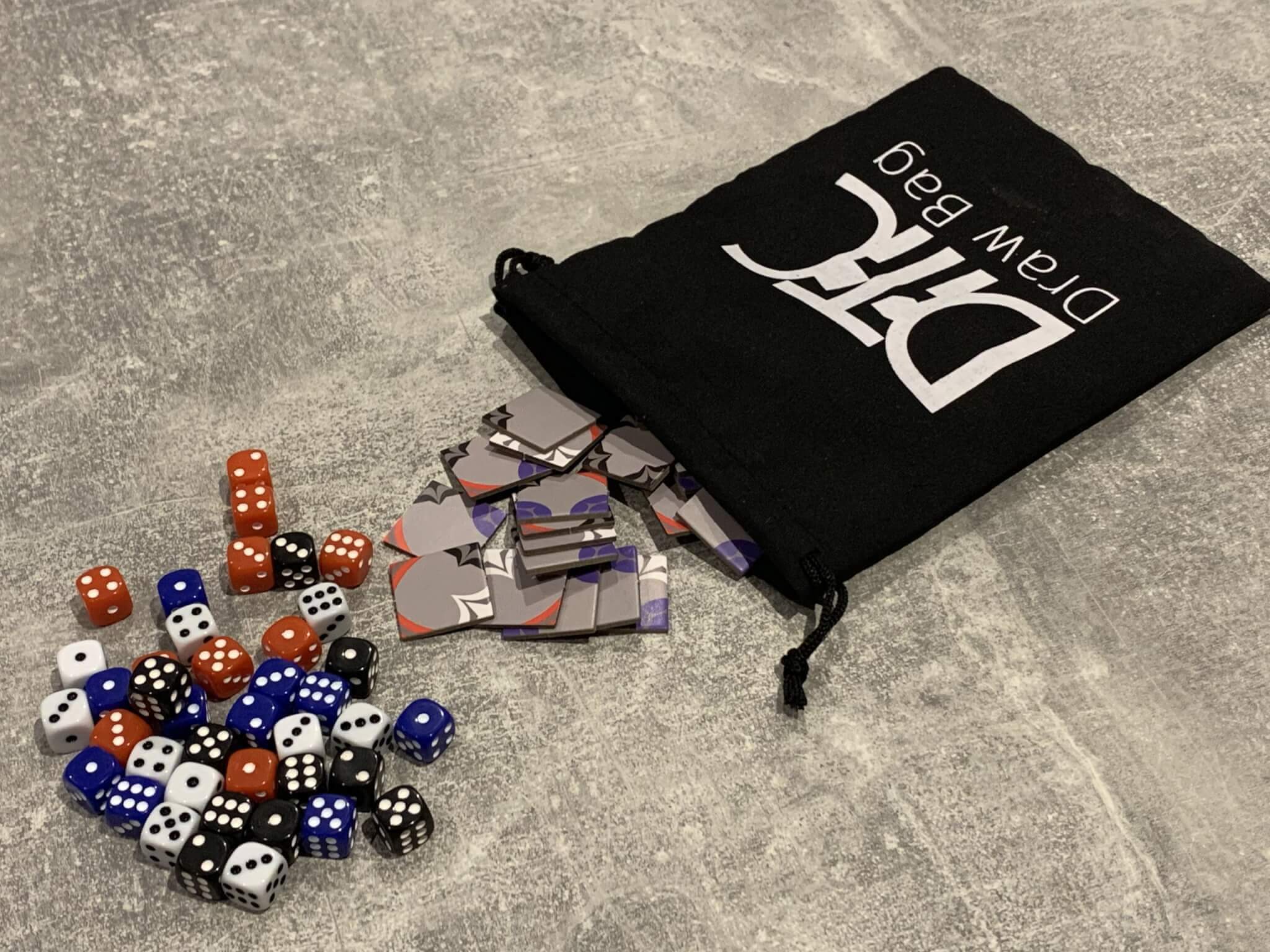
What you get is small but purposeful, and the artwork, which is basic, reminds me of the timeless design of a standard deck of cards. This is a good thing, because despite being basic, DiTiC is quirky in several ways, and for whatever reason, it seems to stick in the mind. The extremely awkward to write name, the deliberately dull appearance, the infectious gameplay.
And yes, the gameplay really is infectious. This is top drawer, completely unique stuff that might have come from a Reiner Knizia or maybe Michael Kiesling on another day. In DiTiC, two to four-players simply complete to get one of their dice up to six. They do this by drawing tokens from a bag and then placing them, with any newly formed corner between four tiles potentially generating a new die.
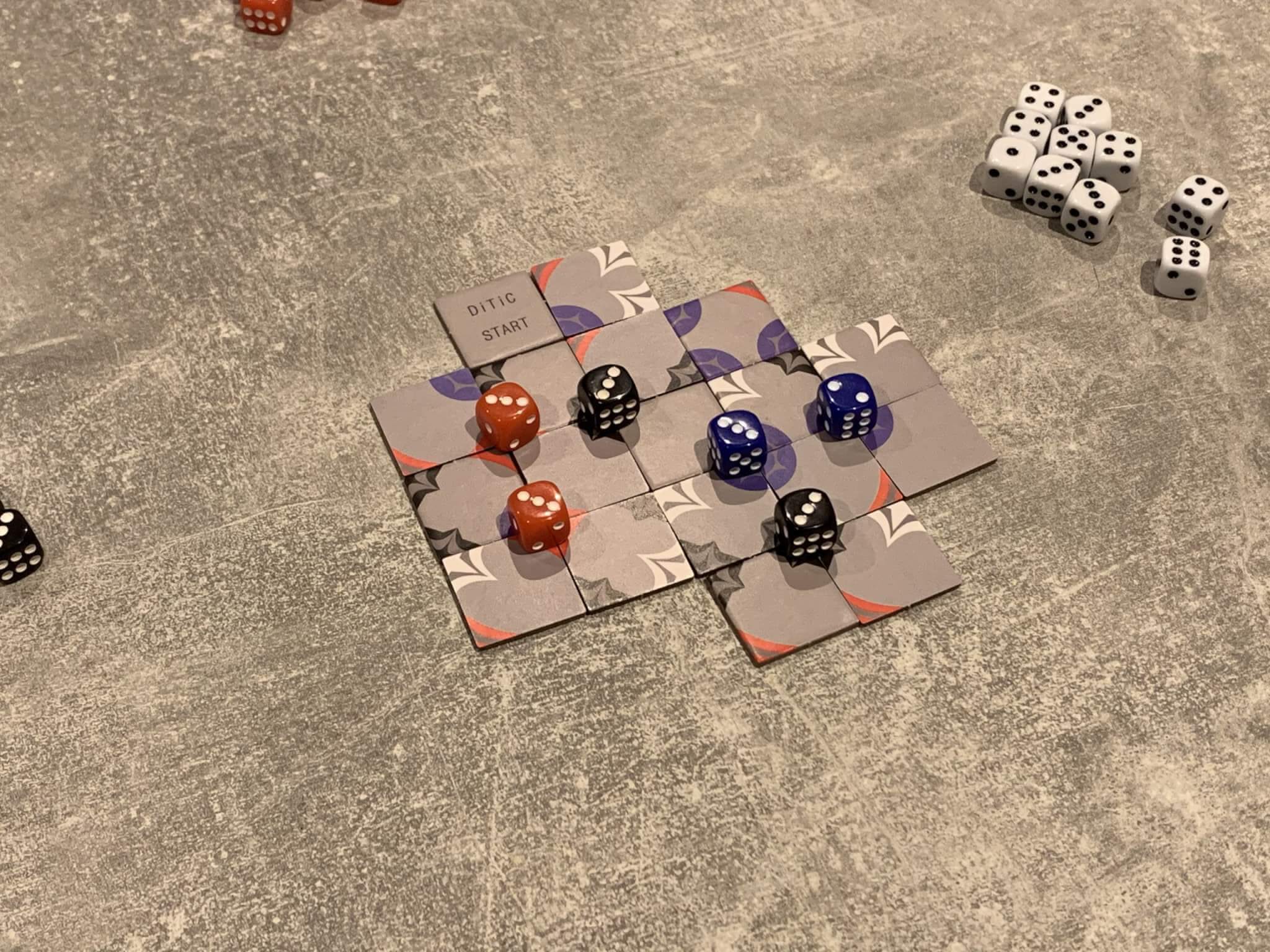
Players have two actions to choose from on their turn; they may move one of their existing dice, which may allow it to move either in a straight line or diagonally, or sometimes to jump over a neighbouring die. Some dice can even take neighbouring enemy dice of a lower value.
Which of these options is legal depends on the value of the dice, with lower numbers being (generally) more maneuverable, and higher numbers more able to take other dice. The main way in which players will ramp up their dice is by having two dice of the same value meet, at which point one is removed, and the other moves up one face. For example, if two three’s meet, then they will become a single four.
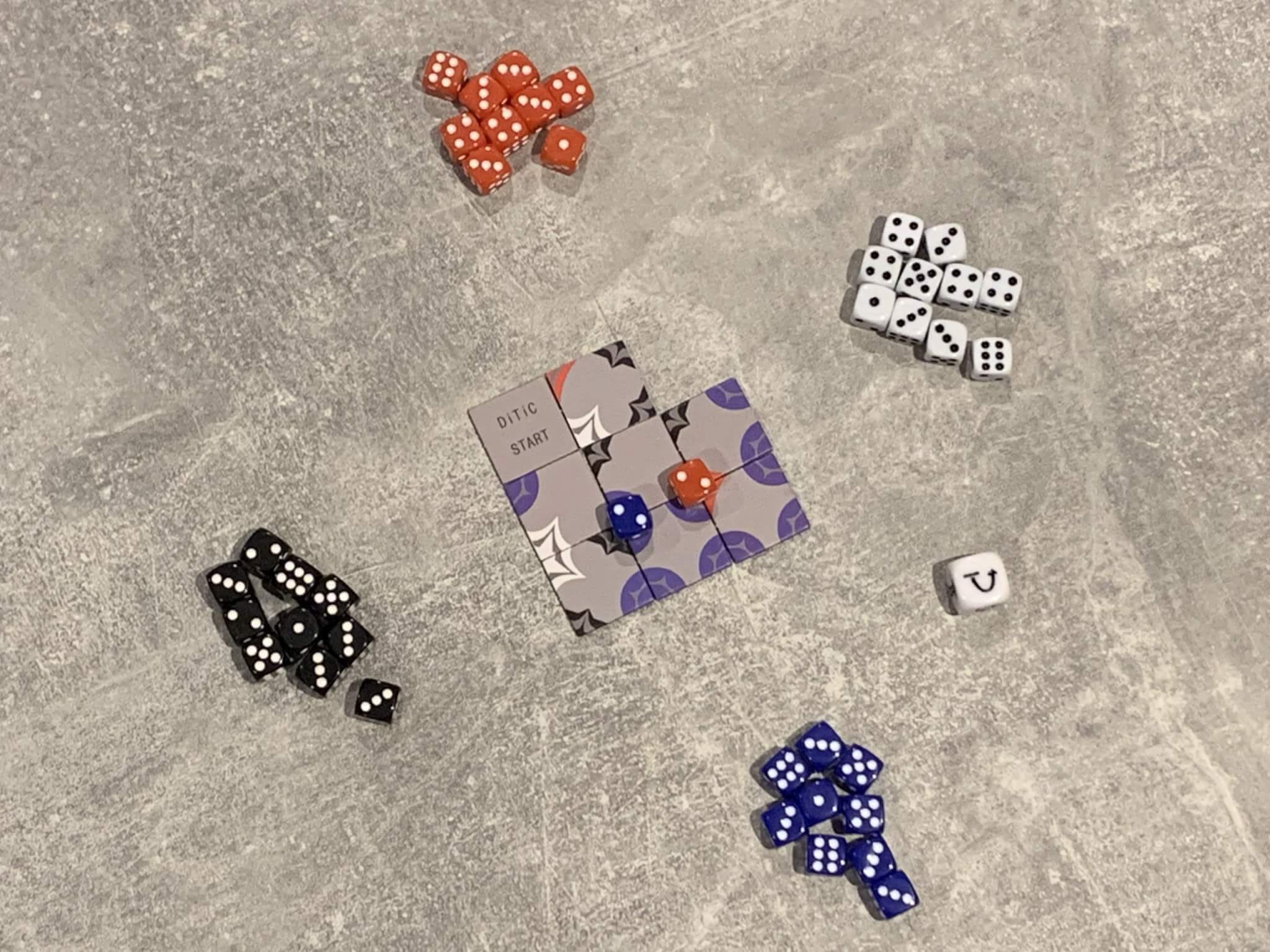
The other action a player can take is to place one of the three tiles in their hand, then draw another one from the bag. When a tile is placed, if a corner is formed between four tiles, a die will spawn in the dominant colour. Players may draw tiles that simply don’t help them, and one interesting strategy in DiTiC is certainly spoiling corners that might benefit an opponent by forcing no majority, or even a die belonging to a player who isn’t in the game.
Clearly, when a player chooses to place a tile, they will often want to generate a die of their own colour. When this is an option, it’s important to note that the face value of the die to be generated will be equal to the number of corners that match its colour. This will commonly be two, sometimes three, and almost never one or four.
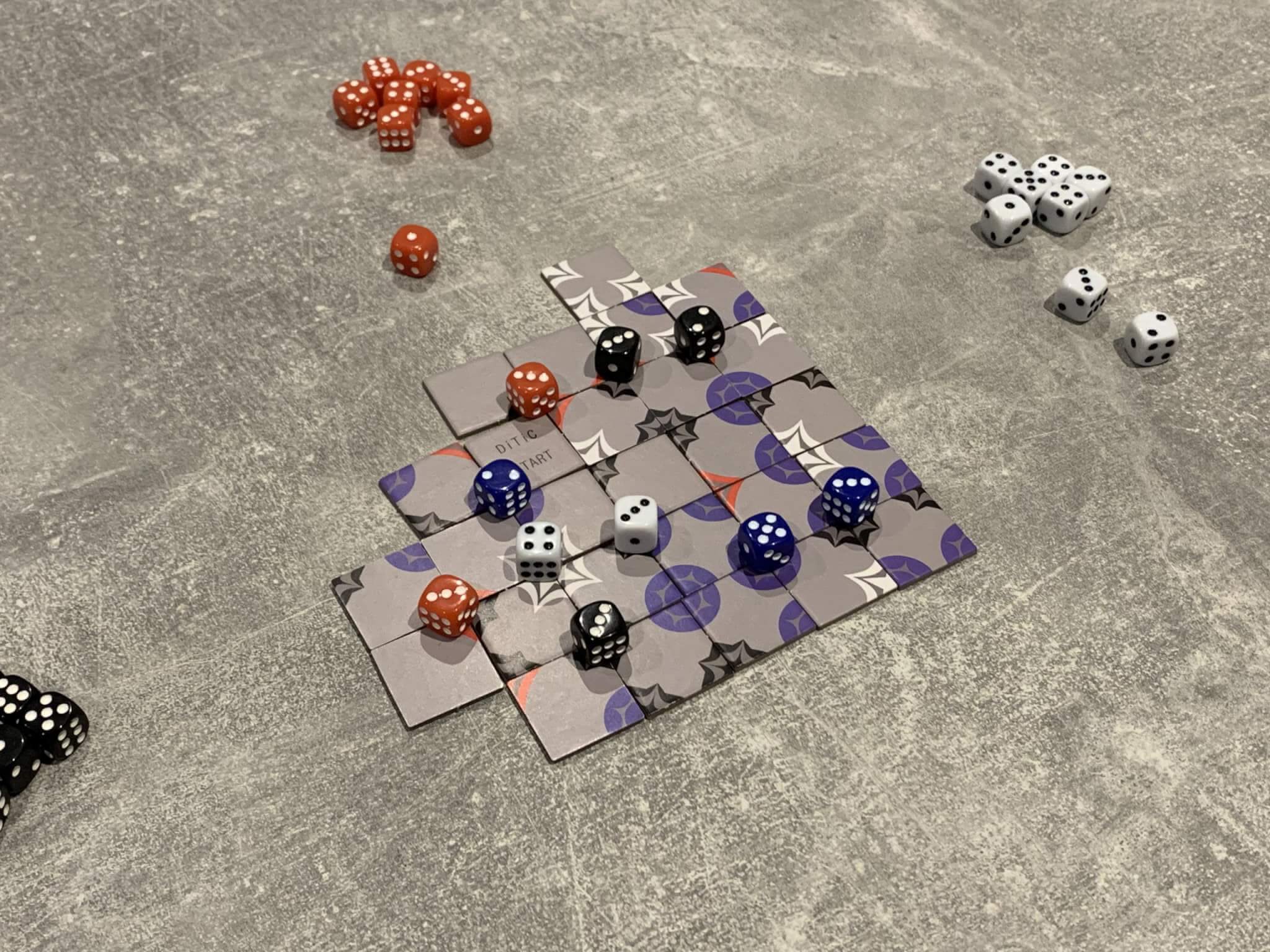
Whenever the tile placement action is taken, the player who performs the action will be able to roll the bonus action die. This may allow them to then move a tile, rotate a tile, place another tile and so on. Technically then, you get to do “more” when you place a tile (usually) but it doesn’t directly enable you to generate a six.
DiTiC has a really interesting and very thinky feel that I doubt you’ll be expecting going into it, given its small box and unassuming components. Its small size makes it extremely versatile, even though you will need at least a medium-sized (and static) space to play it on, thanks to the way in which the tiles build out expansively.
The instruction manual (which is just a couple of pages long, and does have some slightly technical issues) describes DiTiC as a dice-pawn game, but it’s also got tile placement and area majority and some luck (from the bag pulls) as you’ll likely have picked up.
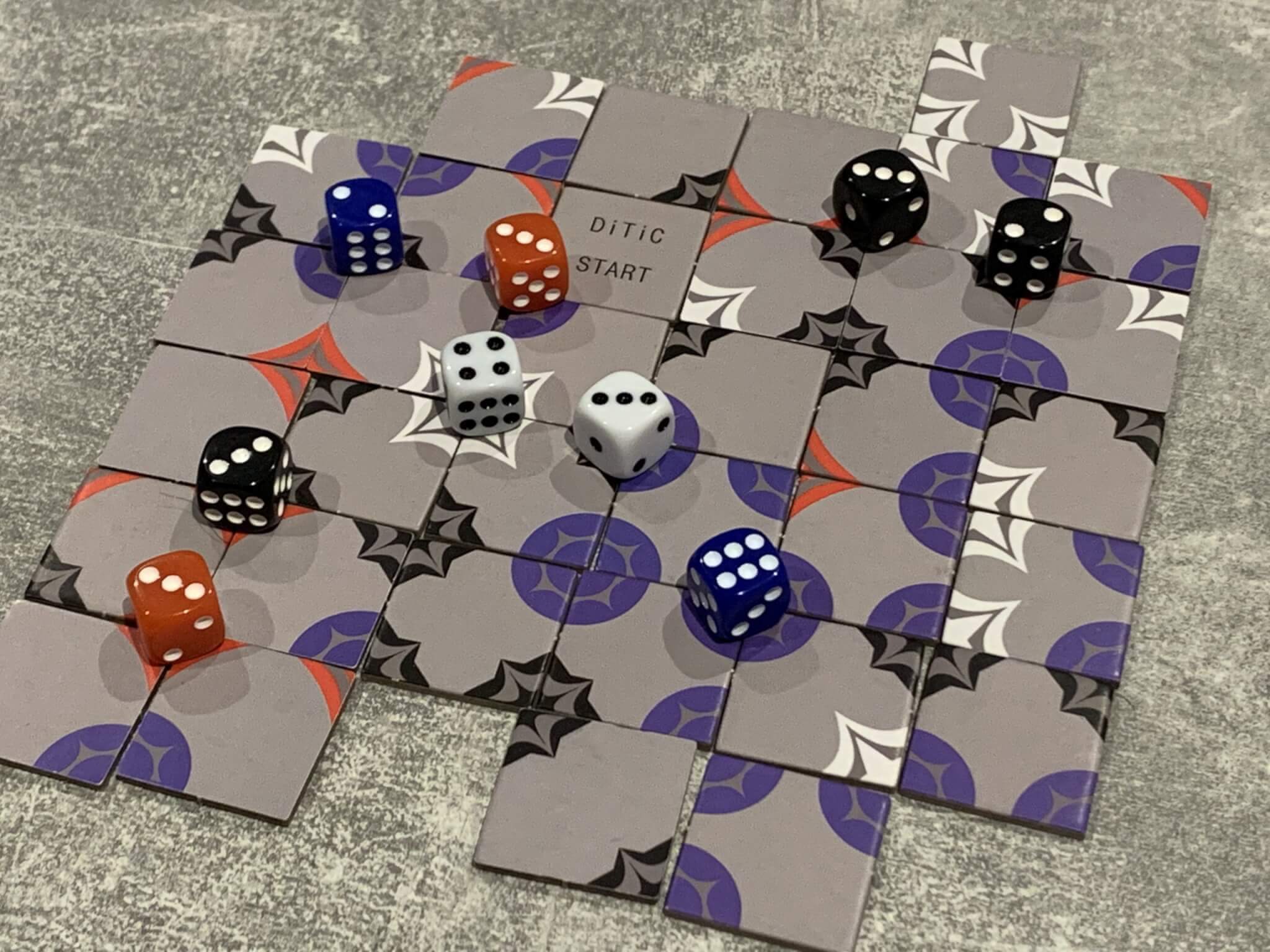
Despite some of my opponents feeling sour about poor luck because they didn’t draw tiles to benefit them, I always felt that I had a range of options each turn. The ability to choose between dice movement and several possible tile placement options gives a lot of variability and choice to each turn, even if it takes a few games to really get under the skin of the game.
Like Chess and Draughts — which I think Browning was sort of nodding to in his design quite overtly — DiTiC has the feel of a classic game that gets better with each play. It’s not quite attractive or immediate enough to make players want to play it over and over in a single session, but I suspect it will have more long term staying power than many flashier games. As such, it’s going in my long term keep pile!
If DiTiC sounds like your cup of tea, then you can still back it as a late pledge and receive a 20% discount by using promo code “BIGBOSS” .

Comments are closed.